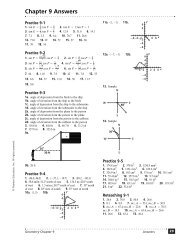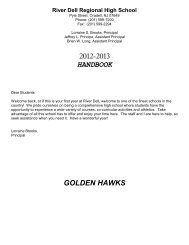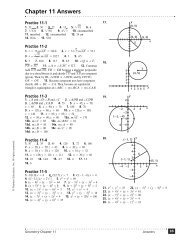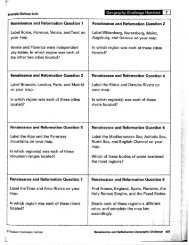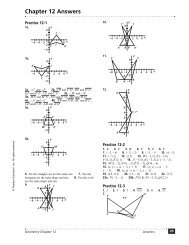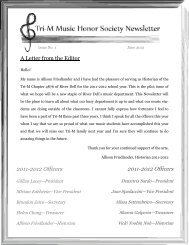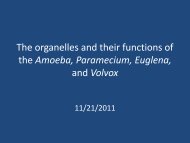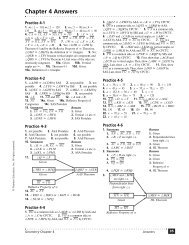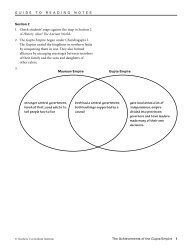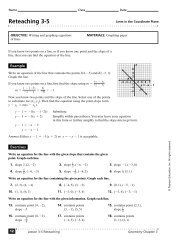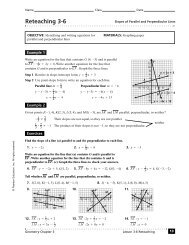Chapter 12 Sequences; Induction; the Binomial Theorem
Chapter 12 Sequences; Induction; the Binomial Theorem
Chapter 12 Sequences; Induction; the Binomial Theorem
Create successful ePaper yourself
Turn your PDF publications into a flip-book with our unique Google optimized e-Paper software.
Section <strong>12</strong>.1: <strong>Sequences</strong><br />
c. Find <strong>the</strong> value of <strong>the</strong> account in 25 years or<br />
100 quarters:<br />
c. Enter <strong>the</strong> recursive formula in Y= and create<br />
<strong>the</strong> table:<br />
The value of <strong>the</strong> account will be $156,116.15.<br />
88. a. Since <strong>the</strong> fund returns 6% compounded<br />
annually, this is equivalent to a return of<br />
0.5% each month. Defining a recursive<br />
sequence, we have:<br />
a0 = 0, an<br />
= 1.005an<br />
− 1+<br />
45<br />
b. Insert <strong>the</strong> formulas in your graphing utility<br />
and use <strong>the</strong> table feature to find when <strong>the</strong><br />
value of <strong>the</strong> account will exceed $4,000:<br />
d. Scroll through <strong>the</strong> table:<br />
After 58 payments have been made, <strong>the</strong><br />
balance is below $140,000. The balance is<br />
about $139,981.<br />
e. Scroll through <strong>the</strong> table:<br />
In <strong>the</strong> 74th month (February 2006) <strong>the</strong> value<br />
of <strong>the</strong> account will exceed $4,000 with a<br />
value of about $4,017.60.<br />
c. Find <strong>the</strong> value of <strong>the</strong> account in 16 years or<br />
192 months:<br />
The value of <strong>the</strong> account will be<br />
approximately $14,449.11.<br />
89. a. Since <strong>the</strong> interest rate is 6% per annum<br />
compounded monthly, this is equivalent to a<br />
rate of 0.5% each month. Defining a<br />
recursive sequence, we have:<br />
a0 = 150,000, an<br />
= 1.005an<br />
− 1−<br />
899.33<br />
b. 1.005(150,000) − 899.33 = $149,850.67<br />
The loan will be paid off at <strong>the</strong> end of 360<br />
months or 30 years.<br />
Total amount paid = (359)($899.33) +<br />
$890.65(1.005) = $323,754.57.<br />
f. The total interest expense is <strong>the</strong> difference<br />
of <strong>the</strong> total of <strong>the</strong> payments and <strong>the</strong> original<br />
loan: 323,754.57 − 150,000 = $173,754.57<br />
g. (a) Since <strong>the</strong> interest rate is 6% per annum<br />
compounded monthly, this is equivalent to<br />
a rate of 0.5% each month. Defining a<br />
recursive sequence, we have:<br />
a0 = 150,000, an<br />
= 1.005an<br />
− 1−<br />
999.33<br />
(b) 1.005(150,000) − 999.33 = $149,750.67<br />
<strong>12</strong>41<br />
© 2009 Pearson Education, Inc., Upper Saddle River, NJ. All rights reserved. This material is protected under all copyright laws as <strong>the</strong>y currently<br />
exist. No portion of this material may be reproduced, in any form or by any means, without permission in writing from <strong>the</strong> publisher.




